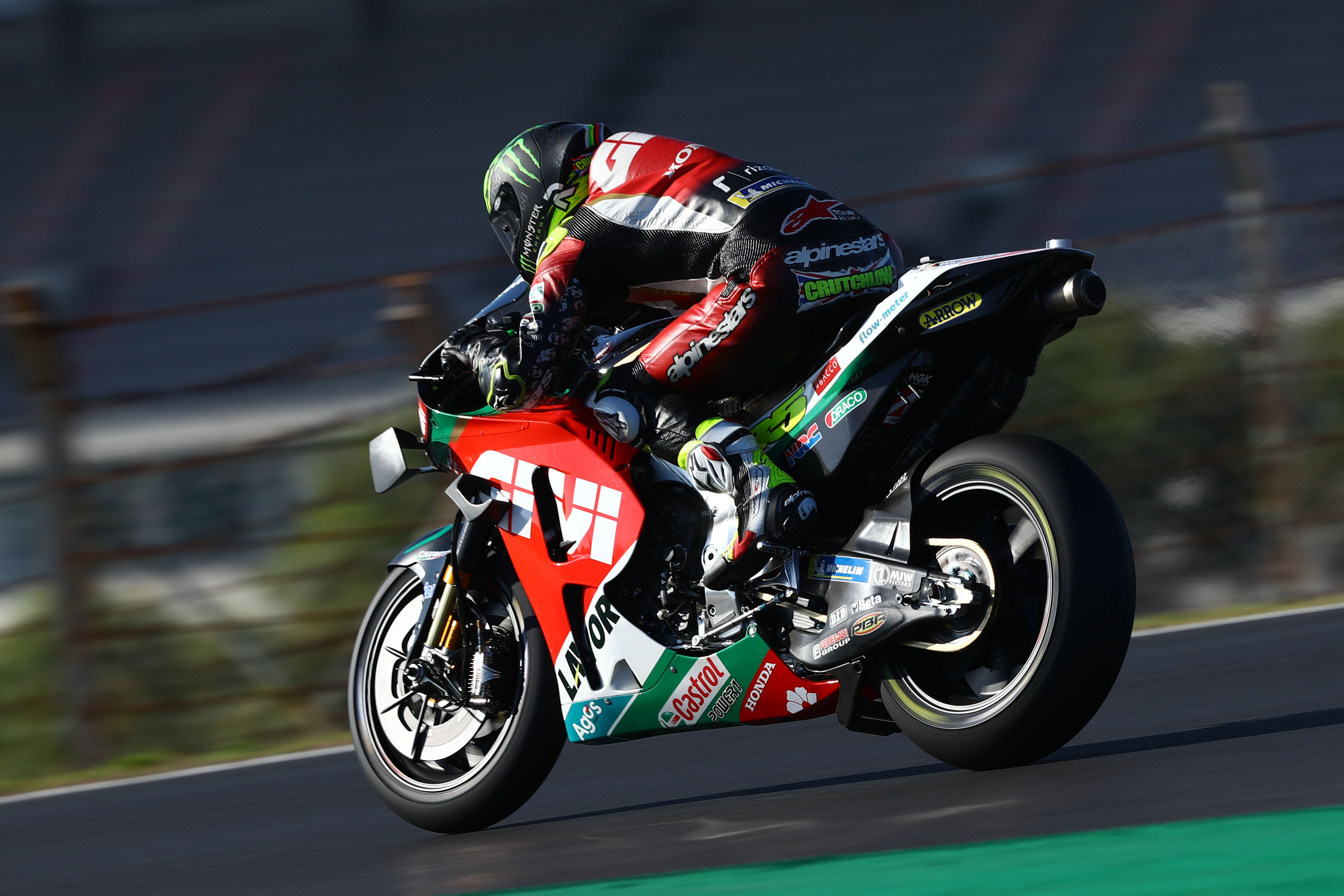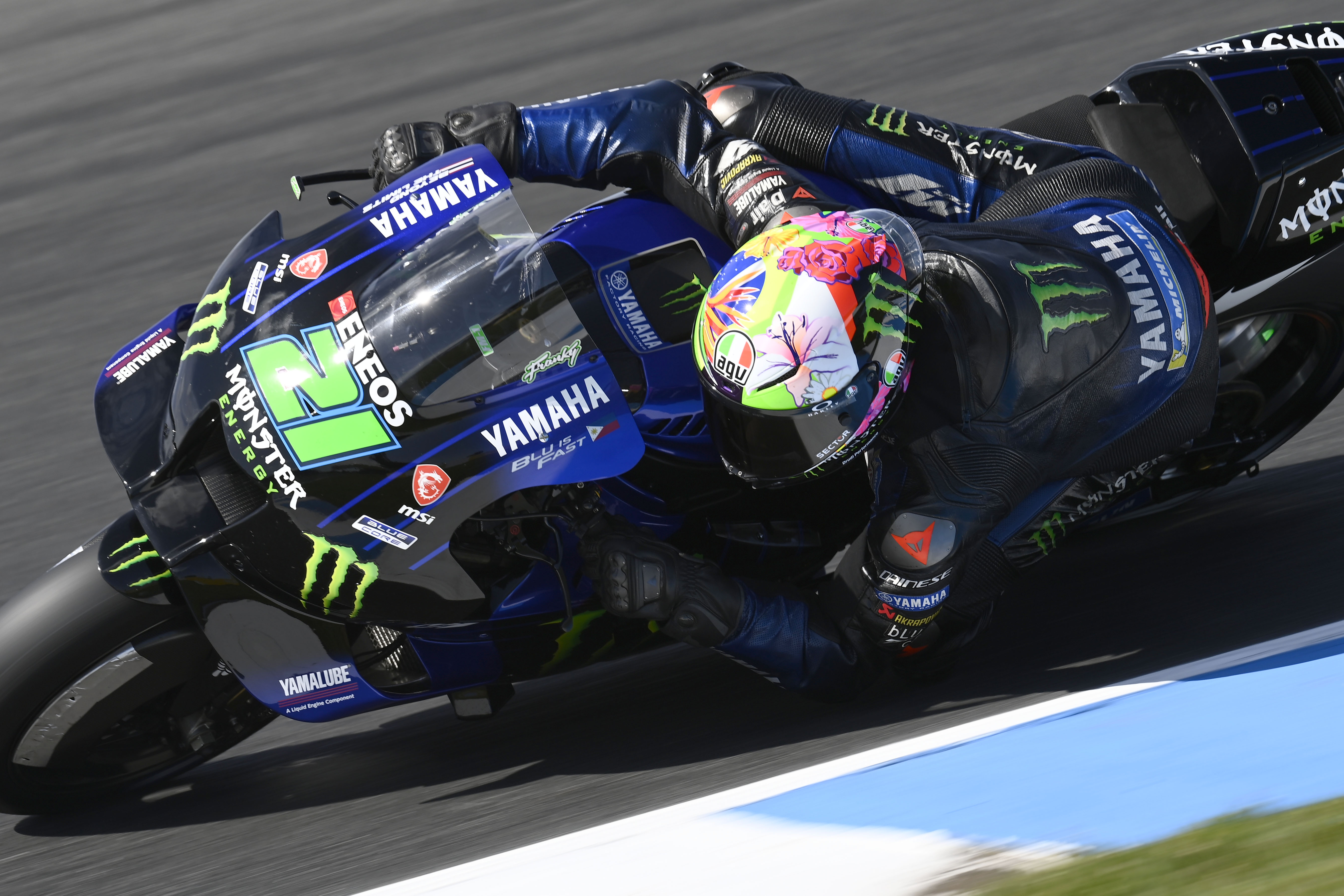until Abu Dhabi Autonomous Racing League

At a time when every other manufacturer on the MotoGP grid is doing everything in its power to strengthen its relationship with its satellite partners, 2021 world champion Yamaha goes into next year with only two bikes.
And given the importance of development if it’s to return to winning ways following a disappointing 2022, that means that it starts the year at a considerable disadvantage to rivals.
It marks the first time in the modern era that Yamaha will be reduced to only two machines, following the loss of single-year partner RNF Racing to Aprilia from 2023. Formerly with Petronas SRT (the ashes of which RNF rose from) and long-time partner Tech3 before that, it’s hardly a huge surprise to see Yamaha left without a partner after years of complaints about the way that its independent outfits were treated.
Pioneered first by Ducati (which starts next year with eight of the 22 grid spots occupied by its machines) and then by Honda, many factories have been building closer links with their satellite outfits in recent years, especially as MotoGP’s testing restrictions become ever-tighter.
By signing up factory racers and placing them at independent teams on current machinery, manufacturers can essentially use them as racing testers, with the likes of Jack Miller, Johann Zarco and Danilo Petrucci at different times all taking on the role for Ducati with Pramac Racing, and Cal Crutchlow (below) fulfilling a similar role at LCR Honda from 2015-20.

But while teams and brands have been becoming increasingly symbiotic, Yamaha has remained rather more conservative and old-fashioned about how it operates, with frequent complaints about customer status (rather than equal footing) being one of the key drivers that lured Tech3 and its boss Herve Poncheral away from Yamaha and over to KTM, where he now receives current-spec machinery for both riders – and where the addition of Pol Espargaro for 2023 very much fills the aforementioned testing-racer role for the brand.
And, with team principal Razlan Razali’s RNF outfit only being offered a single-year deal from the brand after taking over from Petronas SRT (something Yamaha put down to strict corporate governance regulations), it meant that it was easy pickings for Aprilia to poach for next season, especially with the factory picking up its riders’ salary cheques and ensuring that they will start 2023 on the highly-competitive bike that Aleix Espargaro fought for the championship with last year.
That would have been bad news for Yamaha at any time, but it’s even more crucial given the hole that the team currently finds itself in. Essentially relying on Fabio Quartararo to do all the heavy lifting as his factory team-mate Franco Morbidelli still struggles to return to his 2020 title-fighting form, it puts a lot of onus upon the 2021 champion to deliver.
And, with the main reason for Quartararo’s faltering 2022 campaign against Ducati rider Pecco Bagnaia widely acknowledged to be a disadvantaged Yamaha M1, it means that Yamaha is currently in a rush to develop a new machine, a task that will now be exponentially more difficult with only half the amount of data being gathered at any time.
That’s something that has been made abundantly clear over the past two seasons by Suzuki, with the now-departed Japanese team one of only two factories of late to have only a pair of machines on the grid. Alex Rins and Joan Mir missed out through considerable periods of time off due to injury, and one rider’s results typically slumped when the other was absent and unable to help gather data.
Simply put, when you have eight bikes on track, like Ducati does, there will normally always be data from your slowest corner that is faster than yours, providing a key opportunity to improve everywhere. With only two bikes (or, as will realistically be the case for Quartararo unless Morbidelli finds his form again, just one), it makes the job at hand much harder.
In fact, that’s exactly why Aprilia came hunting for RNF’s grid spots for 2023, with the collapse of Espargaro’s title bid believed by some to be largely down to the lack of data gathered by the team at unfamiliar overseas circuits – the key tracks in the final quarter of the season where any hopes he had of an incredible underdog title came to an end.
But while it’s got to be abundantly clear to Yamaha bosses that they need to find a way back to having four bikes on the grid sooner rather than later (and probably need to work out a new way to manage that relationship in the process), it’s not as simple as signing up a free agent and getting to work.

Of the six satellite squads on the grid, it’s all but impossible to see most of them even consider an offer from Yamaha. RNF Racing, recently departed, will be in no rush back, and Tech3’s relationship with KTM has only grown closer of late as the team takes on the quasi-factory mantle of Gas Gas next year.
Pramac Racing has a very tight relationship with Ducati’s bosses, meaning it’s unlikely to go anywhere soon, while LCR Honda is largely reliant on the Idemitsu funding that comes with Honda backing to consider going elsewhere, even as the current RC213V continues to struggle.
That leaves Gresini Racing and Valentino Rossi’s VR46 team as the only potential candidates, should Yamaha hope to lure either away from Ducati. But, with both enjoying considerable success in 2022 thanks to the Italian brand, that might be a bigger challenge than it seems.
Gresini, only just back to true independent status after years helping Aprilia run its MotoGP effort, managed to finish third in the championship with a considerable number of trips to the top step of the podium thanks to Enea Bastianini, while VR46 rookie Marco Bezzecchi made a first appearance on the podium at Assen in what was an impressive debut season.
It’s going to take more than just hope to lure either of those squads away from Ducati, with nothing short of a full financial and technical commitment likely to be needed from Yamaha in order to expand back to four machines. Whether that’s something it’s willing and prepared to do, however, remains to be seen.




